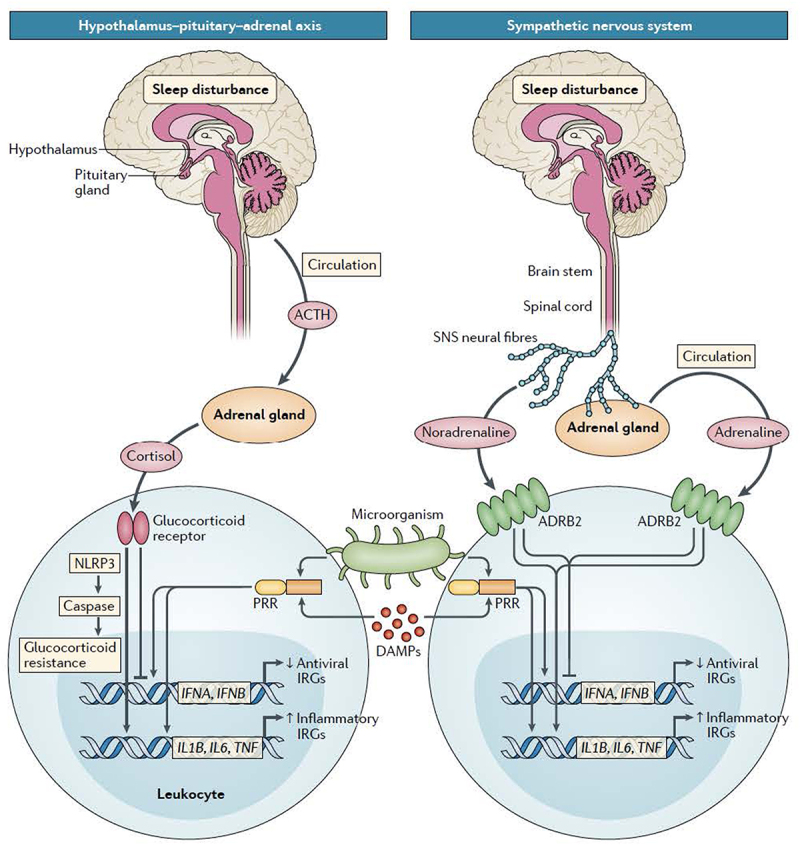Figure 6.

Model of effects of sleep disturbance on the regulation of immune response gene profiles a | In response to activation of the hypothalamic–pituitary–adrenal (HPA) axis, the circulating neuroendocrine glucocorticoid hormone, cortisol, is produced, which regulates by inhibits inflammatory and antiviral immune response genes (IRGs). With sustained engagement of the HPA axis, as might occur with insomnia, glucocorticoid resistance develops, and typical suppression of pro- inflammatory gene networks (such as those encoding IL-1β.
IL-6 and tumor necrosis factor (TNF)) does not occur. However, cortisol continues suppress antiviral gene profiles (such as those encoding IFNα and IFNβ). Glucocorticoid resistance is thought to develop when damage- associated molecular patterns (DAMPs) trigger triggering of pattern recognition receptors (PRRs), leading to activation of inflammatory signaling pathways involving nuclear factor- κB (NF- κB) and the NOD-, LRR- and pyrin domain- containing protein 3 (NLRP3) inflammasome. NLRP3 stimulation in turn activates caspase 1, which cleaves the glucocorticoid receptor, leading to glucocorticoid resistance.b | During sleep disturbance, activation of the SNS leads to release of the neurotransmitter norepinephrine from SNS nerve fibers, as well as release of epinephrine from the adrenal glands into the blood. Both norepinephrine and epinephrine stimulate β2-adrenergic receptors (ADRB2) on leukocytes, which suppresses transcription of antiviral IRGs, and enhances transcription of inflammatory IRGs. ACTH, adrenocorticotropic hormone. Reprinted from Irwin [27] with permission.
